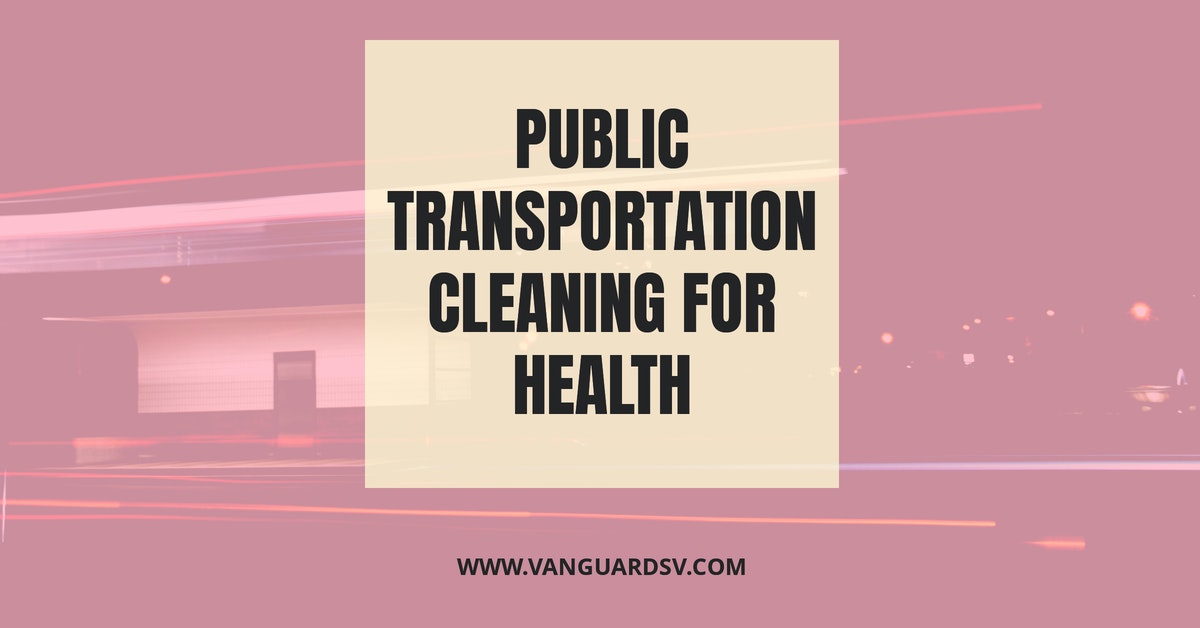Due to their high volume of traffic and 'round the clock use, public transportation hubs and vehicles are considered among the germiest locations you're likely to encounter outside of your home.

Cleaning Public Transit for Health
Public transportation hub and vehicle sanitation and hygiene are critical components of overall general health.
The moment commuters enter the hub or vehicle, they are exposed to potentially contaminated air and surfaces.
The frequency and quality of cleaning within these vehicles and facilities have a direct impact on the health and safety of all travelers, drivers, pilots, and support staff.
Unfortunately, according to Dr. E. Neil Schachter, a professor at the Mount Sinai School of Medicine in New York City, public transportation ranks among the highest in the nation when it comes to contaminated surfaces.
According to the 2014 study;
The more crowded the bus or train, the more likely it is that germs will spread from one person to another.
Additionally, specific surfaces on buses, trains, and subway cars can be germ transmitters.
The Germiest Places — and What You Can Do to Protect Yourself
Public Transit Cleaning Best Practices
The facilities encompassing public transportation hubs can go from clean to filthy in a matter of minutes, even during a global pandemic.
Prior to the COVID-19 outbreak, the U.S. boasted more than 9.9 billion public transportation trips across the country and, while those numbers have seen a sharp decline--60% on subways and 90% on commuter trains--that still leaves literally billions of individual trips throughout the year.
With that many people, dirt, germs, and bacteria are sure to follow and cover every conceivable surface along the way.
Given the enormous square footage of many of these facilities combined with the relatively short downtime available for vehicles, facilities' managers are going to need to coordinate large teams of highly trained and dedicated service providers to maintain the cleanliness and hygiene of the hubs, busses, trains, subways, and planes.
The first step is to break the facility up into zone assignments and identify all high-touch surfaces.
Teams are then divided up and assigned specific zones to clean based on traveler use--basically, following along behind a crowd--as opposed to particular time-based cleaning assignments.
Additional roving teams can be assigned to various high-traffic spaces to wipe down and disinfect high contact germ hot spots with a non-toxic disinfectant to ensure traveler health and safety.
The next step is to identify particular areas within a facility that require special attention due to the increased likelihood of germ transmission--specifically restrooms and dining facilities.
To one degree or another, these areas will need to be monitored, wiped down regularly, and, especially in the case of a busy high-traffic restroom, cleaned almost constantly.
In these instances, using smart cleaning technologies such as SmartTowels, eco-friendly cleaning and disinfectant products, as well as no-touch cleaning and disinfection tools, can significantly reduce the health risk to facility occupants by eliminating the potential for cross-contamination while simultaneously improving service delivery time and quality.
According to a recent article published by industry magazine, CleanLink;
Some transit facilities have begun using anti-microbial copper-alloy touch surfaces and other materials with anti-microbial features to help limit the spread of pathogens.
Door knobs, push plates, railings, faucets and more are available in these materials, which studies have found can reduce disease transmission by more than 50 percent.
However, when such surfaces are not available, disinfectants can be used to combat germs on high-touch surfaces.
[...] there are disinfectants that kill pathogens and then remain on the surface for 30-plus days to kill live viruses and bacteria.
References & Resources
- Preventing Infection In Transportation Centers
- Using Teams To Clean Busy Transit Hubs
- Cleaning Public Transportation for Health
Takeaway
Public transit resources are vital to the function of our society, community, and economy--often facilitating much-needed transportation requirements of the essential workforce in large metropolitan areas during this pandemic.
It is critical that facility managers and cleaning service providers view their role in maintaining the sanitation and hygiene of these hubs and vehicles as being a necessary aspect of improving and maintaining public health and safety.
Outsourcing many of the special services, such as floor care, deep cleaning, and touchless disinfection services, is a proven method for controlling costs while ensuring the highest standards of cleanliness and professionalism.
If you would like more information regarding the effectiveness of high-performance infection prevention and control measures, or if you would like to schedule a free, no-obligation onsite assessment of your facility's custodial needs, contact us today for a free quote!
In Bakersfield CA, call (661) 437-3253
In Fresno CA, call (559) 206-1059
In Valencia CA, or Santa Clarita CA, call (661) 437-3253
In Palmdale CA, or Lancaster CA, call (661) 371-4756

